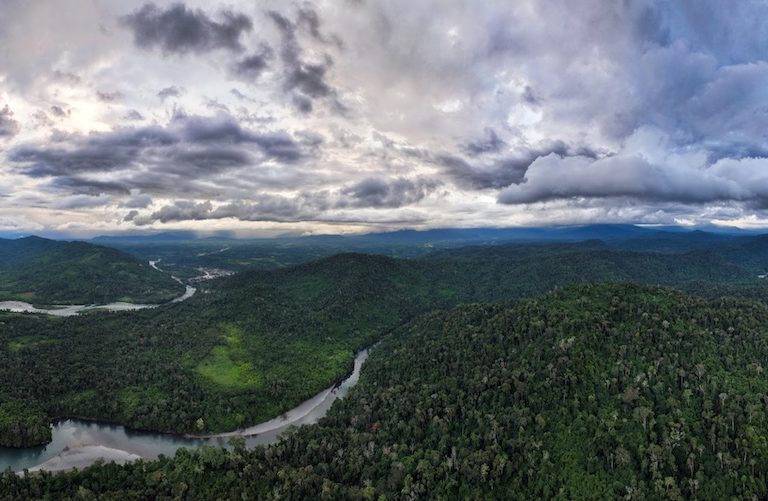- The pressure for both local level management and international conservation efforts foster a “scale mismatch,” in which the levels of governance of these two approaches feel at odds.
- “How then, as a global conservation community, can we reconcile this scale conundrum of local knowledge and stewardship with the need for more widespread protections of biodiversity across the planet?” a new op-ed asks.
- Dr. Eleanor Ostrom’s concept of polycentric governance offers one pathway to multi-scale and multi-stakeholder conservation.
- This article is a commentary. The views expressed are those of the author, not necessarily of Mongabay.
Political anthropologists recommend local-level governance of conservation projects as a human-centric approach to both safeguard biodiversity and support sustainable development. At the same time, scientific evidence from biologists emphasizes the need to protect and restore marine and terrestrial areas at much larger scales to best sustain biodiversity and ecosystem values. The pressure for both local level management and international efforts foster a “scale mismatch,” in which the level of governance of these two approaches feel at odds.
How to bridge the scale gap between local and international governance is missing from the conversation. When scale-up or -down is discussed in the literature, it is more theoretical than applied (“we should” versus “we did”). Few real-world case studies demonstrate such a scale connection, remaining limited in either a local or national approach. Given conservation projects are unique to a site and underlying political, economic, and cultural contexts, replicating them with the intention to scale biodiversity protection introduces complicated variables that encourage a retreat into a simpler, more siloed approach. The introduction of scale turns small problems into wicked ones.
How then, as a global conservation community, can we reconcile this scale conundrum of local knowledge and stewardship with the need for more widespread protections of biodiversity across the planet?
The science is clear. Our planet is in danger. The latest Intergovernmental Panel on Climate Change (IPCC) report announced that the time is “now or never” to limit global warming to 1.5 degrees Celsius. Climate scientists forecast unprecedented heatwaves, flooding, and the migration of both humans and animals. Elizabeth Kolbert explains in her book, The Sixth Extinction, that approximately 75% of all species are in jeopardy due to the current anthropogenically-induced mass extinction. We need sweeping societal changes and ecosystem protections to preserve the planet.
Conservation at a community level offers an opportunity to witness tangible benefits. Small-scale conservation projects are lauded for acknowledging local power dynamics and Indigenous expertise of ecosystems. Buy-in of local communities is likely to result in effective long-term management and monitoring of protected areas. Additionally, artisanal use of protected areas may underpin the customs and livelihoods of local communities without further degrading the area.
From a conservation standpoint, are these smaller projects cumulatively capable of addressing large-scale degradation of natural resources and ecosystems? How do we think about scaling these projects into a larger conservation network? Can we implement both small and large-scale conservation efforts that work in tandem?
I believe we can. The question is how.
The full assessment of any conservation project, large or small, requires the recognition of the inequity of money and power. At all levels power exists, influencing who participates, who decides, who wins, and who loses. In reality, “win-win” scenarios are rare. Almost all conservation efforts create “losers,” given that conservation efforts are ultimately a set of compromises between numerous stakeholders. With the growing focus on multi-use areas to facilitate sustainable development, conservation efforts are expected to promote ecosystem resilience, feed communities, generate revenue, and store carbon, all at the same time – a herculean task. Who decides which outcomes are valued as “wins” is greatly influenced by power.
Funding is a part of that power. Money is required at all scales to transform commitments into action. Non-governmental organizations (NGOs) hold potential to act as bridging organizations, providing funds and fostering accountability to both local and national governments for the implementation of science-based targets. However, donors and organizations must recognize realistic project timelines or risk establishing temporary or ineffective initiatives.
NGOs can also leverage their international recognition as a tool to elevate the participation of local communities lacking power at a federal level, or less powerful countries at an international level. Limited resources and capacity hinder participation at higher governance scales, resulting in an experience called “legitimacy tension,” in which the conservation work facilitated by communities or countries is diminished by their lack of ability to participate in higher-level decision-making around said projects. While often missing from governance discussions, national governments possess the opportunity to implement legal frameworks that legitimize work done at a local level and foster engagement. Reducing legitimacy tension by empowering leaders at all scales will enhance greater multi-level collaboration.
See related: Are conservation trust funds part of the answer for ongoing land protection?

In recognition of power inequities present in natural resource management, the theory of polycentric governance gained traction in the 1990s under Dr. Eleanor Ostrom. During this period, political scientists began to push for increased consideration of social, political, and economic dynamics of environmental issues. The polycentric governance system seeks to reconcile governance scale mismatch by leveraging the strengths of different stakeholders through the cooperation of autonomous, decision-making units at various scales to collectively manage natural resources.
Polycentric governance offers one pathway to multi-scale and multi-stakeholder conservation. For example, in the United States, for over 11 years the Sage Grouse Initiative engaged 11 Western states to conserve eight million acres of land and protect sage grouse habitat. Today, work continues through federal agencies and local stakeholders to address habitat threats on an additional 1.7 million acres. In Namibia, the government ceded land tenure rights and obligations to local communities in the 1990s, resulting in the establishment of 76 community-run conservancies, incorporating rural development with biodiversity conservation and climate change mitigation. The country continues to update its national Community-Based Natural Resource Management Program.
Conservation is hardly a one size fits all endeavor, and polycentric governance is not a panacea. The Tūhoe people in New Zealand currently oppose co-governance of the Te Urewera National Park with the federal Department of Conservation, and continue to negotiate for greater autonomy in the park’s management.
Pressures of the global economy and its demand for natural resources will continue to increase, yet the scientific literature sends practitioners in two different directions: community-based natural resource management and large-scale protections. We need to develop a common language around scale and governance. We need to hear more from practitioners in the field, focusing on mutual interests between large and small projects. While academics have more freedom to be highly critical in their research, practitioners are more beholden to demonstrating success for donors. Despite this, we can and should learn not only from their successes, but also from informative failures, half wins, and mixed results.
Conservation is messy. Considering scale in planning creates both challenges and benefits. While it may produce more questions than answers, we should continue the dialogue on bridging the scale gap and work toward more successful multi-scale conservation efforts.
Gillian Sawyer is currently pursuing a graduate degree at the Yale School of Environment’s Master of Environmental Management Program. Her professional background lies in international conservation and she has also studied the intersection of climate change and conservation.
Related listening from Mongabay’s podcast: As conservation icons pass away, who will lead the movement to steward the planet’s biodiversity now, and does conservation still need iconic leaders? Host Mike G. speaks with two women with conservation science PhDs who share expansive views on what’s next for leadership in the field, listen here:
Are conservation trust funds part of the answer for ongoing land protection? (commentary)
This story first appeared on Mongabay
South Africa Today – Environment
This article is licensed under a Creative Commons Attribution-NoDerivatives 4.0 International License.
You may republish this article, so long as you credit the authors and Mongabay, and do not change the text. Please include a link back to the original article.












